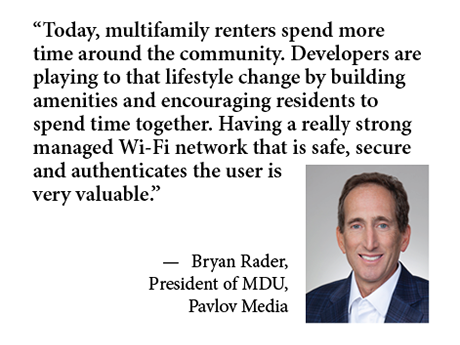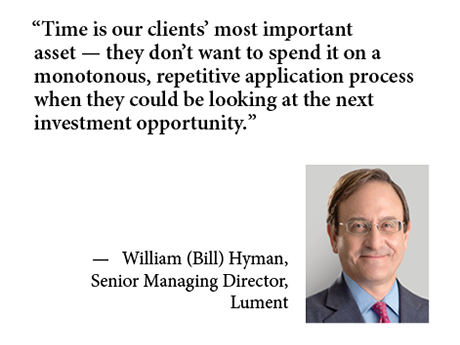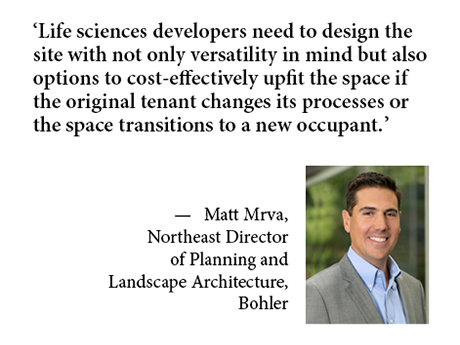Developers are finding it tougher than ever to finance affordable housing. And often, the biggest hurdle for the sector’s borrowers involves construction — either obtaining that initial loan at a manageable cost or qualifying for take-out financing after a protracted construction period — which has strained resources and delivery schedules for a number of developments. Limitations on rent increases make the industry especially vulnerable to rising costs, and expenses today have risen precipitously across the board. Rents have also grown, but not on pace with construction and operating costs driven up by inflation, wage pressures, soaring insurance premiums and a series of interest rate hikes, observes Tracy Peters, a senior managing director on Lument’s affordable housing production team. “Borrowers are squeezed by a number of things in this marketplace,” Peters says. “The fed funds rate climbing 5 percent over the last two years means the interest rates on construction loans have basically come up 5 percent or more over that time. Now folks who had budgeted for a much lower interest rate — if they are still in construction mode — are trying to figure out how to deal with these higher interest rates.” At the same time, the …
Content Partner
Affordable HousingContent PartnerDevelopmentFeaturesLoansLumentMidwestNortheastSoutheastTexasWestern
Following the financial markets crash 15 years ago, banks and other lenders began working with commercial real estate (CRE) borrowers who had run into trouble. Solutions included loan extensions, loan sales, recapitalizations and foreclosures. Today lenders are pulling out the playbook again. “We have seen a huge number of loan workout deals come across our desk,” says Jeff Salladin, a managing director with Dallas-based private debt fund Revere Capital. “Any lender that holds loans on their books is seeing the same thing.” Back in 2008, dodgy and highly leveraged residential and CRE loans — along with the emergence of exceedingly risky debt derivatives created by Wall Street — eventually crashed, causing the credit market to collapse. Today credit is still available, but the cost of it has spiked over the last 18 months. Consequently, many commercial properties owners have seen values plummet, making it difficult to find refinancing. The Federal Deposit Insurance Corp.’s (FDIC) imminent auction of Signature Bank’s $33 billion in commercial property loans and other assets is expected to attract bids as much as 40 percent below face value, according to The Wall Street Journal. That’s just the latest gloomy bellwether regarding CRE values and underscores the predicament …
Content PartnerDevelopmentFeaturesLeasing ActivityMidwestMultifamilyNortheastPavlov MediaSoutheastTexasWestern
Multifamily Operators Adopt Property-Wide Internet Access as New Standard Amenity
Multifamily residents want to take their internet connections with them beyond their unit’s four walls and throughout the complex. The National Multifamily Housing Council has found for years that 90 percent of renters say good internet access is a necessity. But the meaning of good connectivity has changed. “Ten, fifteen or twenty years ago, the most popular trend was cocooning — where people would go to work, come home and run into their apartment. They’d close the door, and you wouldn’t hear or see from them again until the next day,” says Bryan Rader, president of MDU at internet service provider Pavlov Media. “Today, multifamily renters spend more time around the community,” he continues. “Developers are playing to that lifestyle change by building amenities and encouraging residents to spend time together. Having a really strong managed Wi-Fi network that is safe, secure and authenticates the user is very valuable.” Put more simply, Wi-Fi within amenities is important to renters. Take fitness centers, for example. When was the last time you saw anyone on a treadmill without headphones relaying music from the internet through a phone or tablet? The move toward property-wide internet demand started in universities as students needed internet …
AcquisitionsContent PartnerDevelopmentFeaturesIndustrialLeasing ActivityLee & AssociatesMidwestMultifamilyNortheastOfficeRetail
Lee & Associates: Slowing Absorption, Rent Growth Put Brakes on New Development for Most Real Estate Types, Though Retail Sector Shines
Slower absorption and rent growth plagued industrial, office and multifamily asset classes across the United States in the third quarter, as outlined in Lee & Associates’ 2023 Q3 North America Market Report. Some regional exceptions were able to buck the overdevelopment trend, but retail was the only property type to avoid the quarter’s shift toward rising vacancy rates. High interest rates, slower rent growth and fear of overbuilding have contributed to lower construction starts in every sector. The full Lee & Associates report is available — including breakdowns of factors like detailed vacancy rates, inventory square footage, cap rates outlined city by city, market rents and more — here. The analysis below provides an overview of industrial, office, retail and multifamily real estate sectors alongside sector trends, economic background as well as geographic exceptions within each property type. Industrial Overview: Absorption Continues Slowing, Inventories to Spike Demand for industrial space remained positive in the United States in the third quarter, but growth this year has lost steam compared to strong net absorption totals of the last two years. U.S. net growth in the third quarter totaled 29.9 million square feet compared to 94 million square feet for the same period last year. …
Families searching for more space, in part as remote work options retain their hold on the workplace landscape, plus strong migration into the Southeast have helped fuel a robust single-family rental market, especially in Atlanta and other Georgia markets over the last several years. More recently, young renters pairing up to share the growing burden of housing costs, as well as would-be home buyers putting off a purchase because of higher interest rates, have also gravitated toward single-family rentals, says Troy Reynolds, a multifamily advisor with NAI G2 Commercial Real Estate, who has added single-family rentals to his business focus. Given the lack of housing supply in the Southeast, these conditions are likely to persist for the foreseeable future. As a result, a growing number of investors have been piling into the assets amid a multifamily investment market saturated with buyers and a consequent leap in prices over the past few years, he adds. “We just don’t have enough housing to meet all the demand, and we continue to see a mass exodus from other states into the Southeast, and particularly into Georgia,” Reynolds states. “So, we’re seeing a lot of younger as well as newer investment groups coming …
Today’s accelerating technology transformation is altering how the commercial real estate industry executes transactions and manages assets. “The amount of information that a multifamily borrower needs to submit and disclose has become more demanding over time,” says William (Bill) Hyman, a Lument senior managing director who oversees the firm’s strategic business technology transformation and conventional loan production. “That has made due diligence more complex and data intensive, and we wanted to create a more secure and expedient way to tackle that process.” Seeing this need, Lument responded by creating a suite of proprietary technology tools. Across the industry, the advent of online, friendlier multifamily loan application and servicing processes has not only eliminated the transfer of sensitive information through email by moving the processes to secure portals, but it has also streamlined common paper-based, time-consuming and burdensome tasks. That has translated into much speedier decisions about loans and responses to questions and requests. LeapOnline Beginnings Lument is a commercial real estate finance solutions provider based in New York that specializes in Fannie Mae, Freddie Mac, Federal Housing Administration and balance sheet lending. The company’s digital transformation began in 2017. At the time, the company saw the opportunity to better …
Affordable HousingContent PartnerDevelopmentFeaturesLoansMidwestMultifamilyNortheastSoutheastTexasWalker & DunlopWestern
How to Maximize Agency Financing for Affordable Housing
There are a variety of ways to build affordable housing, but implementing these strategies has become an increasingly difficult proposition in 2023. Affordable housing projects seem to face challenges on every front. Generally affordable housing developers will: Despite intensifying renter demand for new units, developers are struggling to make their projects financially feasible, says John Ducey, chief production officer in the affordable lending group at Walker & Dunlop. “Affordable housing developers are facing some of the toughest headwinds I’ve seen in more than 20 years in the industry,” Ducey says. “That means developers are forced to work harder than ever to structure deals that stretch scarce housing subsidies and maximize agency financing.” Challenging Conditions One impediment to affordable housing efforts is reduced future rent levels, related to area median income (AMI) caps the Department of Housing and Urban Development (HUD) imposed recently on LIHTC properties in many markets in the United States. The unexpectedly restrictive caps forced developers to slash revenue projections, scuttling some transactions and forcing many loan applicants to renegotiate or seek alternative financing to salvage deals. On the expense side, inflation and the labor crunch continue to drive up costs for new construction, renovation of older affordable …
BohlerContent PartnerDevelopmentFeaturesIndustrialLife SciencesMidwestNortheastOfficeSoutheastTexasWestern
Site Design Science: How Understanding Operations Draws Pharmaceutical Manufacturers
Pharmaceutical companies have captured the interest of many developers and with good reason. Softening demand for traditional office space has planners looking for alternative uses to fill out business parks and multiuse developments, and drug makers represent a promising source of highly valuable occupancy. Speculative construction that accelerated during the pandemic has given pharmaceutical manufacturers plenty of options and enabled them to be choosy in site selection. However, to compete for end users, developers must ensure their properties offer the features and amenities drug makers seek, says Matt Mrva, northeast director of planning and landscape architecture at Bohler, a land development consulting and site design firm. “Simply adding a life sciences label on conventional flex space is unlikely to lure pharma companies. Research, lab and pharmaceutical manufacturing facilities often require specialized infrastructure and site layouts,” Mrva says. “Even if a property is zoned to allow for life sciences, design and development teams need to understand the proposed operations in order to optimize the facility.” Unique Facility Requirements Depending on anticipated needs, tenants may require advanced climate control and ventilation, redundant electrical feeds, high-volume water and sewer service, on-site wastewater pretreatment, backup power generation, reinforced floors to handle the weight of …
Self-storage has had an amazing run since just before the pandemic. Cap rates started near 6 percent, with buildings starting at $150 per square foot. Then came the flood of pandemic capital pushing prices — by mid-2022 prices jumped to a point no one had previously experienced. “In some of the bigger markets, we were seeing per-square-foot prices of $300 and above for the first time,” says Denise Nunez, executive managing director with NAI Horizon. Cap rates fell to as low as 4 percent. “The low cap rates had gotten to such a point where many brokers were not even pricing deals because they didn’t want to miss that extra that they could get on the sale.” But rising interest rates have had an impact on self-storage, as they have had on every other commercial real estate asset class, with prices reversing again. Investors are still unsure of what the Federal Reserve will be doing in the near term with monetary policy. Building costs are high — final delivery construction costs are still higher by 40 percent or more than pre-pandemic. That reality has resulted in investors alternating between cold feet and, with some signs that the Fed may plan …
Internet connectivity is the digital equivalent of a foundation for any multifamily property. Residents want access for communications, entertainment, business and personal needs. Property operators need connections for management and reporting software resources. Good and reliable connections to the Internet, and a dependable Wi-Fi network as a way of distributing that access, are essential. Looking three to five years into the future, these connectivity needs become even more demanding and complex. The Internet of Things (IoT) creates a layer of interesting application and use cases for property owners. IoT defines the collective network of connected technology that enables communication between devices (“things”) and the cloud and/or among the devices themselves. IoT devices are the technology that creates smart home and buildings. IoT devices also support and simplify functions such as rental property management, energy usage reduction, maintenance cost reduction and more. “Looking into the future, IoT applications can make the property more efficient in surprising ways,” says Eran Dor, vice president of technology products at Pavlov Media. Leak detectors can provide early warning of flooding and appropriately shut off water before any significant damage occurs. Trash cans can be equipped with sensors that indicate when to collect, rather than requiring …











